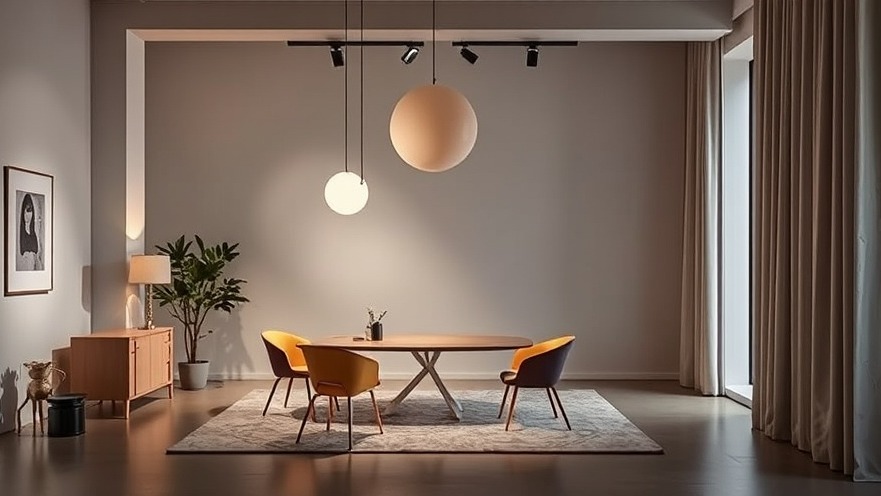
The Rise of Innovative Design Spaces
In a world where remote work continues to dominate, the launch of Design.Space in Los Angeles signals a fresh wave of interest in innovative and inspiring work environments. The event, hosted by Basic.Space at the Pacific Design Center, showcased a port of curated collectible design and even featured a full-scale gas station created by the legendary French designer Jean Prouvé. This year, it encompassed not just traditional design, but also a unique integration of art and fashion, merging commercial experiences in ways that resonate with today's digital nomads.
Jean Prouvé and Functional Aesthetics
The standout attraction at Design.Space was undoubtedly the Sainte-Marie model gas station, designed in 1969. Once intended for fuel distribution, this modular structure exemplifies Prouvé’s principles of adaptability and structural ingenuity. Now reimagined for residential use, the gas station invites workspace envisioners to analyze and adopt its intriguing design elements. These can enhance comfort while retaining a clean, efficient look suitable for modern home offices.
Curating an Experience
The Design.Space event was characterized by a curated blend of contemporary works and historical pieces, showcasing a thoughtful connection between the past and present. Alongside modern furniture collections, visitors encountered installations like the Enorme telephone by Ettore Sottsass, enlightened by a nostalgic yet functional office aesthetic. Such exhibitions are particularly beneficial for remote workers seeking inspiration not just in productivity but also in their workspace aesthetics.
Fusing Art, Design, and Functionality
Basic.Space aims to redefine what design means by intertwining art and fashion into its marketplace framework. Organizer Jesse Lee described the event as a fusion of a shopping experience with the intriguing atmosphere of an art fair. This blend creates opportunities for customers, especially digital nomads, to explore how art and design can term shifting decor ideas into functional workspace solutions. The ability to filter through large-scale installations down to smaller, collectible items can inspire individuals to carve out unique areas of creativity within their homes.
A New Era of Remote Workspaces
In light of changing work habits, the concepts on display at Design.Space offer valuable insights for anyone aiming to create a comfortable and effective remote working environment. Emerging designers like Sabine Marcelis showcased unique pieces such as her lavender Stedelijk chairs, specifically designed to attract consumers looking for modern yet practical furniture. Such innovative design choices can help elevate personal workspace settings to reflect individuality and purpose.
Future Trends in Workspace Design
The Design.Space event not only showcased current designs but also paved the way for trends that can reshape the functionality of remote workspaces in the future. Customizable and colorful designs encourage personalization, as digital nomads often spend considerable time in their work environments. New materials and formats emerging from designers at this event suggest a shift towards integrating health-oriented aspects of design into everyday furniture. This could inspire users to consider ergonomics and functionality as they evolve their home offices.
Encouraging Comfort and Creativity
For many remote workers, comfort is key, and well-designed spaces offer a productive backdrop for creativity. The installations featured at Design.Spaces serve to remind us of the importance of aesthetics in our work lives. A thoughtfully designed chair or an inspiring color palette can transform one's workspace and ultimately enhance wellness and productivity. For digital nomads, indulging in art and embracing comfort can lead to innovative breakthroughs in mindset and work approach.
As more events like Design.Space take root, they nurture a collective understanding of how design plays a pivotal role in day-to-day productivity. With unique offerings and curated experiences available, these marketplaces not only prompt purchases but also spark valuable design conversations in the workspace arena, especially important for those navigating remote work.
Join the exciting journey of exploring how design innovations at events like Design.Space can transform your workspace and well-being.
 Add Row
Add Row  Add
Add 




Write A Comment